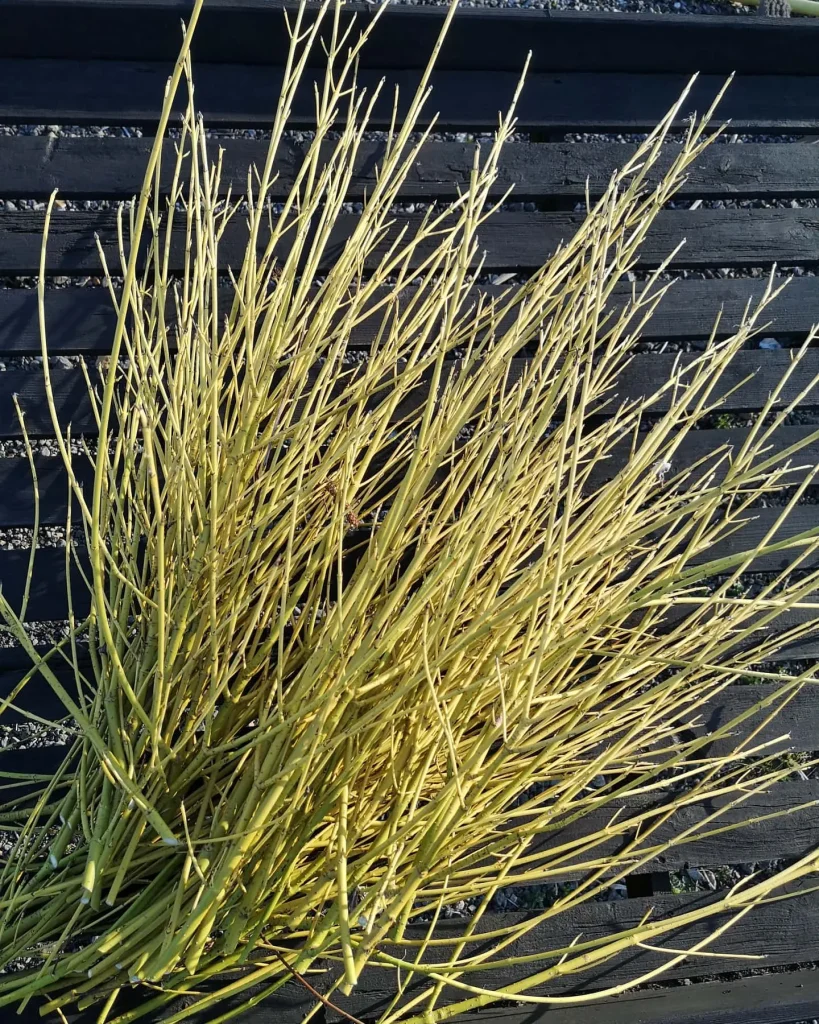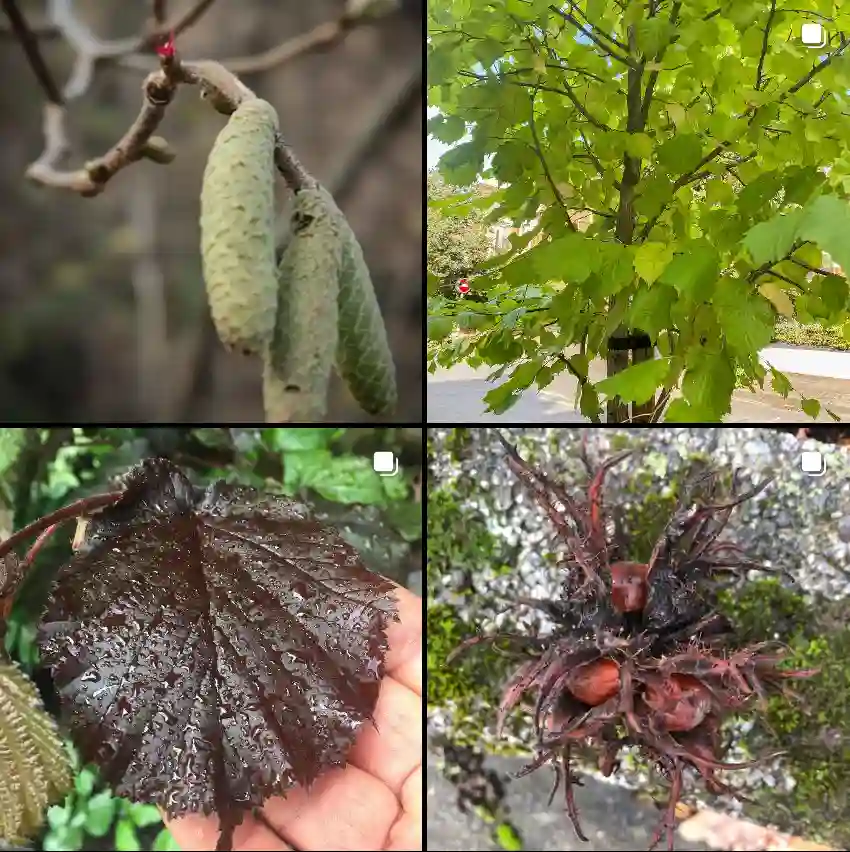
The garden is a canvas, and some plants are the timeless strokes that bring it to life. Among these, the Wax Begonia, or Begonia semperflorens, stands out as a beacon of consistent beauty. Celebrated for its continuous bloom from spring until the first frosts of autumn, Begonia semperflorens is a garden favorite, known for its cheerful, often waxy foliage and vibrant flowers. Cultivars like the distinguished ‘Senator White’, with its pristine white blossoms set against a backdrop of rich, bronze-red foliage, offer a sophisticated elegance that belies their remarkably easy-going nature.
This comprehensive guide will delve into every facet of cultivating Begonia semperflorens, providing you with the knowledge to achieve a stunning display in your garden or containers. We’ll also embark on a unique “time lapse” journey, chronicling the growth of a ‘Senator White’ cultivar from a tiny seed to a mature, profusely flowering specimen, as told through the eyes of a passionate gardener, illustrating the lifecycle common to this remarkable species.
I. Understanding Begonia Semperflorens
To truly appreciate Wax Begonias, it helps to understand their botanical lineage and unique characteristics.
Botanical Background
- Genus: Begonia
- Species: semperflorens (often grouped as Begonia Semperflorens Cultorum Group)
- Common Names: Wax Begonia, Bedding Begonia, Fibrous Begonia, Annual Begonia (though perennial in warmer climates).
The name semperflorens literally means “ever-flowering,” a testament to this plant’s prolific and enduring bloom cycle. These begonias are known as Wax Begonias due to their thick, glossy, and somewhat succulent leaves, which have a waxy appearance. They are fibrous-rooted, meaning they produce a network of fine, thread-like roots rather than tubers or rhizomes, contributing to their compact, bushy growth habit.
Key Characteristics of Begonia Semperflorens
Begonia semperflorens as a species exhibits several defining traits that make it a popular choice for gardeners:
- Flowers: The flowers are typically single, with four petals (two larger, two smaller), though double-flowered varieties exist. They are commonly found in shades of white, pink, and red, often with yellow centers, and are borne in loose clusters (cymes) above the foliage. They bloom profusely and continuously from late spring through fall.
- Foliage: Leaves are generally rounded or oval-shaped, thick, and glossy, giving them a “waxy” appearance. They come in two main color types: bright green or various shades of bronze to dark reddish-brown. This foliage provides a robust backdrop for the colorful blooms.
- Size and Habit: These are compact, bushy, and mounded plants, typically reaching a height of 6-12 inches (15-30 cm) and a spread of 6-12 inches (15-30 cm). Their tidy growth habit makes them excellent for various planting schemes.
- Heat and Drought Tolerance: While consistent moisture is preferred, Wax Begonias generally exhibit good heat tolerance once established and can withstand short periods of drought due to their succulent leaves, which store water. Bronze-leaved varieties often show slightly greater sun and heat tolerance.
- Versatility: They are widely adaptable, growing well in containers, garden beds, as edging plants, or even as temporary houseplants.
Specific Characteristics of ‘Senator White’: As a distinguished cultivar, ‘Senator White’ enhances these general traits with specific aesthetic appeal:
- Flower Color: Pristine, clear white blooms.
- Foliage Color: Lush bronze-red to dark bronze foliage, which provides a dramatic contrast to the white flowers. This deep coloration makes the flowers truly pop and gives the plant a sophisticated, eye-catching appearance.
- Overall Appeal: The striking combination of white flowers and dark foliage makes ‘Senator White’ a showstopper, adding depth and richness to any planting.
Origin and History
Wax Begonias (Begonia semperflorens) are native to tropical and subtropical regions of South America, particularly Brazil. They thrive in warm, humid environments and were first introduced to Europe in the 19th century, quickly gaining popularity for their reliable bloom and attractive foliage. Through extensive hybridization, countless cultivars have been developed, offering a wide array of flower and foliage colors, as well as variations in size and habit. The ‘Senator’ series, including ‘Senator White’, represents modern breeding efforts focused on vigor, uniform growth, and outstanding garden performance.
II. The Time-Lapse Journey: Cultivating ‘Senator White’ from Seed
As a gardener, there’s a unique satisfaction in nurturing a plant from its humble beginnings. Join me on a year-long time-lapse journey of growing a specific Begonia semperflorens cultivar, ‘Senator White’, from seed, observing its transformation through key milestones that are common to the entire species.
Month 1-3: The Genesis – Sowing Seeds and Early Sprouts
(Early Spring)
“It was a chilly March morning, but my gardening spirit was ablaze. I had just received a packet of ‘Senator White’ begonia seeds – tiny, almost dust-like specks, a stark contrast to the promise they held. My first task was preparing the seed trays. I opted for a high-quality, sterile seed-starting mix, ensuring it was thoroughly moistened. Begonia seeds need light to germinate, so I gently scattered them on the surface, resisting the urge to cover them. A fine misting and a clear plastic dome over the trays created the perfect humid, greenhouse-like environment.
I placed the trays under grow lights, keeping the temperature consistently around 72−77∘F (22−25∘C). The first few weeks were a test of patience. Around day 10, I saw the faintest hint of green – the cotyledons, the embryonic leaves, emerging! By the end of week three, a delicate carpet of tiny green seedlings had formed. I carefully removed the plastic dome, allowing for better air circulation while still maintaining high humidity around them with regular misting. This was the true ‘genesis’ moment, seeing life spring forth from those minuscule seeds.”
- Milestone: Seed germination, cotyledon emergence, establishment of tiny seedlings.
- Key Care: Consistent warmth, high humidity, bright indirect light, surface sowing.
Month 4-6: Adolescence – Transplanting and First Blooms
(Late Spring to Early Summer)
“By late April, my ‘Senator White’ seedlings were no longer fragile specks. They had developed their first true leaves – in this case, those distinctive bronze-red leaves that would define their beauty. Their roots were starting to explore the media, signalling it was time for their first major move. With utmost care, handling them by their leaves rather than their delicate stems, I pricked them out of the communal tray and transplanted each tiny plant into individual 2-inch cell packs filled with a slightly richer, well-draining potting mix. The transition was smooth, and they settled quickly, ready for more space to grow.
As May arrived and the risk of frost passed, I began the ‘hardening off’ process, gradually exposing the young plants to outdoor conditions over a week or two. This transition from the sheltered indoors to the variable outdoors is crucial. By early June, with the soil warmed and the danger of frost a distant memory, my ‘Senator White’ plants, now about 4-6 inches tall, were ready for their final homes. Some went into decorative patio containers, destined to flank my entryway, while others were meticulously spaced in the garden bed, forming a future border.
It was just a few weeks after planting them out when I noticed the first tiny white buds forming! A thrill ran through me. By mid-June, the garden was graced with the first pristine white blossoms. These early flowers were smaller, but their arrival was a clear sign of healthy, vigorous growth. The plants were transitioning from mere foliage producers to prolific bloomers.”
- Milestone: Development of true leaves, successful transplanting, hardening off, establishment in final planting locations, first flower buds, initial blooming.
- Key Care: Careful transplanting, hardening off, consistent watering, balanced fertilizer.
Month 7-9: Peak Performance – Summer Splendor
(Mid-Summer to Early Autumn)
“July and August saw my ‘Senator White’ begonias hit their stride. The plants had bushed out significantly, forming dense mounds of bronze foliage dotted with an ever-increasing profusion of white flowers. They were truly ‘ever-blooming’, with new buds constantly replacing spent blossoms. The bronze leaves, exposed to the summer sun, deepened in their rich hue, creating a striking contrast with the crisp white flowers.
I made sure to water them consistently, especially during dry spells, applying water directly to the soil to avoid wetting the foliage, which can encourage fungal issues. About once a month, I gave them a dose of balanced liquid fertilizer, diluted to half strength, to fuel their continuous flowering. Deadheading, while not strictly necessary for continuous bloom on many semperflorens types, became a routine for me. Pinching off the faded flowers kept the plants looking tidy and redirected the plant’s energy into producing even more new blooms.
These months were a testament to their low-maintenance nature. Even during the peak summer heat, ‘Senator White’ remained vibrant and robust, outshining many other annuals in my garden with its unwavering display.”
- Milestone: Full, bushy growth, peak flowering, consistent color display.
- Key Care: Regular watering, monthly fertilization, optional deadheading, monitoring for pests.
Month 10-12: The Transition – Autumnal Grace and Overwintering
(Late Autumn to Early Winter)
“As September unfolded, the days grew shorter, and the nights carried a crisp coolness. My ‘Senator White’ begonias, however, showed no signs of slowing down. They continued to produce a magnificent cascade of white blooms, proving their remarkable resilience right up until the first frost.
In late October, with the forecast predicting a hard frost, I faced a choice. In my USDA Zone, Wax Begonias are typically grown as annuals. However, for a few of my favorite container plants, I decided to attempt overwintering. I carefully cleaned the plants, removing any yellowing leaves or spent flowers. Then, I brought the pots indoors, placing them in a bright, indirect light location, like a sunny window in a cooler room. I significantly reduced watering, allowing the soil to dry out more between applications, as their growth slowed considerably. My goal was simply to keep them alive and semi-dormant until spring.
By December, the outdoor ‘Senator White’ plants had succumbed to the frost, their season of glory concluded. But indoors, a few cherished specimens continued their quiet existence, a promise of new life for the coming spring. This ‘time lapse’ had shown me not just the lifecycle of a plant, but the enduring joy and satisfaction of nurturing beauty through the seasons.”
- Milestone: End-of-season bloom, frost impact, overwintering preparation (if desired), dormancy/decline.
- Key Care: Reduced watering indoors, bright indirect light, protection from frost.
III. Essential Care Guide for Thriving Begonia Semperflorens
Beyond the time-lapse narrative, consistent care is paramount for the success of your Begonia semperflorens plants.
Light Requirements
Begonia semperflorens is adaptable, thriving in a range of light conditions.
- Optimal: Bright, indirect sunlight or partial shade. This typically means 4-6 hours of direct morning sun or dappled light throughout the day.
- Tolerance: Wax Begonias (especially bronze-leaved varieties like ‘Senator White’) are more tolerant of full sun in cooler climates. However, in hot summer climates, afternoon shade is highly recommended to prevent leaf scorch. Green-leaved varieties generally prefer more shade.
- Too Little Light: Will result in leggy growth, sparse foliage, and reduced flowering.
- Indoors: Place in a well-lit room with indirect sunlight from a window, or supplement with artificial grow lights for 12-14 hours daily.
Watering Techniques
Consistent moisture is key, but overwatering is a common pitfall.
- Frequency: Water when the top inch (2.5 cm) of soil feels dry to the touch. This could be daily in hot, dry conditions or every few days in cooler, more humid environments.
- Method: Use the “soak and dry” method. Water thoroughly until water drains from the bottom of the pot. Avoid overhead watering, as wet foliage can lead to fungal diseases like powdery mildew or botrytis blight. Pour water directly at the base of the plant.
- Drainage: Ensure pots have adequate drainage holes. In garden beds, well-draining soil is crucial.
- Signs of Incorrect Watering:
- Underwatering: Wilting, crispy leaves.
- Overwatering: Yellowing leaves, mushy stems, root rot.
Soil Preferences
Wax Begonias prefer a well-draining, fertile soil.
- Potting Mix: For containers, use a high-quality, lightweight potting mix with good drainage. A mix formulated for annuals or houseplants, often containing peat moss, perlite, or vermiculite, works well.
- Garden Beds: Amend heavy clay soils with organic matter like compost, aged manure, or bark fines to improve drainage and fertility. Sandy soils can also benefit from organic matter to improve water retention.
- pH: They generally prefer a slightly acidic to neutral pH, ideally between 5.5 and 6.5.
Fertilization
Regular feeding supports continuous bloom.
- During Growing Season: Fertilize every 2-4 weeks during the active growing season (spring through early autumn) with a balanced, water-soluble liquid fertilizer (e.g., 10-10-10 or 20-20-20), diluted to half strength.
- Slow-Release: Alternatively, incorporate a slow-release granular fertilizer into the soil at planting time for sustained nutrient release.
- Winter: Reduce or cease fertilization during cooler months or if overwintering indoors, as the plant’s growth slows.
- Signs of Nutrient Deficiency: Yellowing leaves, stunted growth, or poor flowering can indicate a need for nutrients.
Temperature & Humidity
- Temperature: Wax Begonias thrive in warm temperatures between 60−75∘F (15−24∘C). They are not frost-tolerant and should be protected from temperatures below 50∘F (10∘C). In most temperate climates, they are grown as annuals.
- Humidity: While they can tolerate average household humidity, they appreciate moderate to high humidity. Indoors, consider placing pots on a pebble tray filled with water (ensuring the pot doesn’t sit directly in water) or using a humidifier, especially in dry winter environments.
Pruning & Deadheading
- Deadheading: While Begonia semperflorens are self-cleaning to some extent (spent flowers often drop off), regularly pinching off faded blooms (deadheading) will keep the plant looking tidier and encourage more flowers. This redirects the plant’s energy from seed production to further blooming.
- Pruning: Lightly prune leggy or spindly growth to maintain a compact, bushy appearance. You can also prune to shape the plant as desired. Early spring is an ideal time for more significant pruning if overwintering.
Pest and Disease Management
Wax Begonias are generally robust but can be susceptible to certain pests and diseases, particularly in stressed conditions or poor air circulation.
Common Pests:
- Aphids: Small, soft-bodied insects that cluster on new growth, sucking sap. Rinse them off with a strong stream of water or use insecticidal soap.
- Mealybugs: White, cottony masses found in leaf axils or on stems. Dab with a cotton swab dipped in rubbing alcohol or use insecticidal soap.
- Spider Mites: Tiny arachnids that cause stippling (tiny dots) on leaves and fine webbing. They thrive in dry conditions. Increase humidity and use insecticidal soap or neem oil.
- Thrips: Tiny, slender insects that cause silvery streaks and distortion on leaves and flowers. Use insecticidal soap or neem oil.
Common Diseases:
- Powdery Mildew: White, powdery patches on leaves, especially in high humidity and poor air circulation. Improve air circulation, reduce overhead watering, and consider a fungicide if severe.
- Botrytis Blight (Gray Mold): Fuzzy gray mold on flowers and leaves, often in cool, wet conditions. Remove affected parts immediately, improve air circulation, and avoid wetting foliage.
- Root Rot: Caused by overwatering and poor drainage, leading to wilting, yellowing, and eventual plant collapse. Ensure well-draining soil and avoid overwatering.
- Leaf Spot: Circular to irregular tan/brown spots on leaves. Ensure good air circulation and avoid overhead watering.
Prevention is Key:
- Ensure good air circulation by proper spacing.
- Avoid overwatering.
- Water at the base of the plant, not overhead.
- Inspect plants regularly for early signs of pests or disease.
- Maintain plant vigor through proper feeding and light.
IV. Propagation Methods: Expanding Your Begonia Semperflorens Collection
Begonia semperflorens can be easily propagated, allowing you to create more plants for free.
From Seeds
As experienced in the “time lapse” journey, growing from seed is rewarding, though the seeds are tiny.
- Timing: Start seeds indoors 8-12 weeks before the last expected frost in your area.
- Sowing: Use a sterile, fine-textured seed-starting mix. Lightly moisten the mix. Scatter the tiny seeds evenly on the surface; do not cover them, as they require light to germinate. Mixing seeds with a little fine sand can help with even distribution.
- Environment: Maintain consistent moisture (misting regularly) and high humidity (cover trays with clear plastic or a dome). Keep temperatures between 72−77∘F (22−25∘C).
- Germination: Seeds typically germinate in 2-3 weeks. Once germinated, gradually reduce humidity and provide bright, indirect light.
- Pricking Out: When seedlings have developed their first true leaves, carefully prick them out and transplant into individual cell packs or small pots.
- Hardening Off: Before planting outdoors, gradually acclimate the young plants to outdoor conditions.
From Stem Cuttings
This is a quicker method for creating larger plants.
- Timing: Take cuttings in late spring or early summer from healthy, non-flowering stems.
- Taking Cuttings: Choose a healthy stem about 4-6 inches (10-15 cm) long with several leaves. Cut just below a node (where a leaf attaches) using a clean, sharp knife or scissors.
- Preparation: Remove the lower leaves from the bottom 1-2 inches (2.5-5 cm) of the stem to prevent rot when planted. You can dip the cut end in rooting hormone powder, though it’s often not strictly necessary for Wax Begonias.
- Rooting Medium: Insert the cutting into a pot filled with a moist, well-draining potting mix or a mix of perlite and peat.
- Environment: Place the pot in a warm, brightly lit area, out of direct sunlight. Covering the pot with a plastic bag or placing it in a propagation dome can help maintain humidity.
- Watering: Keep the rooting medium consistently moist but not waterlogged.
- Root Development: Roots typically develop in 2-4 weeks. Once a good root system has formed, you can treat them as mature plants.
V. Design and Landscape Uses
Begonia semperflorens is an incredibly versatile plant, making it a favorite for a variety of landscape and container applications. Its uniform growth, continuous bloom, and striking color make it a fantastic choice for:
- Mass Plantings: Create a stunning carpet of color by planting Wax Begonias in large drifts or beds. This creates a high-impact visual display.
- Borders and Edging: Its compact and mounding habit makes it perfect for defining pathways, garden beds, or the front of borders.
- Containers and Window Boxes: Wax Begonias excel in pots, hanging baskets, and window boxes, where their continuous bloom can be enjoyed up close. Pair them with complementary foliage plants or other flowering annuals. ‘Senator White’ is particularly effective in these settings due to its distinctive bronze foliage.
- Groundcover: In warmer zones where it can overwinter, it can act as a lovely, low-growing groundcover.
- Shade Gardens: While bronze-leaved varieties tolerate more sun, Begonia semperflorens still performs beautifully in partial to dappled shade, brightening darker corners of the garden.
- Houseplant: In cooler climates, it can be grown as a charming houseplant in a bright, indirect light location.
Companion Plants: Begonia semperflorens pairs beautifully with plants that offer contrasting textures or colors. Consider:
- Foliage Plants: Coleus (especially those with dark or lime green foliage, which would complement ‘Senator White’ particularly well), Sweet Potato Vine (Ipomoea batatas), or ornamental grasses.
- Flowering Plants: Impatiens (for a shade-loving combo), Lobelia, or dusty miller for silvery contrast.
VI. Begonia Semperflorens in Comparison (vs.)
Understanding how Begonia semperflorens stacks up against other popular plants, particularly other begonia types and shade annuals, can help you make informed planting decisions.
Bronze-Leaved Begonia Semperflorens (e.g., ‘Senator White’) vs. Green-Leaved Begonia Semperflorens
This is a direct comparison within the Begonia semperflorens species.
- Foliage: The primary difference. Bronze-leaved varieties like ‘Senator White’ feature lush bronze-red to dark bronze foliage, while other cultivars have bright green leaves.
- Sun Tolerance: Bronze-leaved varieties generally exhibit greater tolerance to full sun exposure, making them more adaptable for sunnier spots, especially in cooler climates. Green-leaved types tend to prefer more shade to prevent leaf scorch.
- Visual Impact: Bronze-leaved types offer a bolder, more dramatic contrast between their flowers and dark foliage, while green-leaved varieties present a softer, more classic look.
Begonia Semperflorens vs. Impatiens (Impatiens walleriana)
Both are classic shade-loving annuals, but they have distinct differences.
- Sun Tolerance: While Impatiens walleriana (common impatiens) are strictly shade plants (though newer downy mildew resistant varieties exist), Begonia semperflorens (Wax Begonias) are much more versatile, tolerating partial sun and even full sun in some climates (especially bronze-leaved types).
- Foliage: Wax Begonias have thick, glossy, waxy leaves (green or bronze), while Impatiens have softer, thinner leaves.
- Water Needs: Impatiens are notoriously thirsty and will wilt dramatically when dry. Wax Begonias are more drought-tolerant due to their waxy leaves.
- Flower Form: Impatiens typically have flat, five-petaled flowers. Wax Begonias have more cup-shaped or rounded flowers.
- Disease: Common Impatiens are highly susceptible to Impatiens Downy Mildew, a devastating fungal disease that has severely limited their use in many regions. Wax Begonias are not affected by this disease.
Begonia Semperflorens vs. Tuberous Begonias (Begonia x tuberhybrida)
These two begonia types are very different in their root structure, bloom, and care.
- Root System: Wax Begonias (semperflorens) are fibrous-rooted, growing a network of fine roots. Tuberous Begonias grow from tubers (fleshy, underground storage organs), which means they can be dug up and stored over winter.
- Flower Size and Form: Tuberous Begonias are known for their spectacular, often large (up to 6 inches wide), showy blooms, which can be single, double, ruffled, or camellia-like, in a wide array of colors. Wax Begonias have smaller, simpler flowers.
- Light Preference: Tuberous Begonias prefer shadier conditions and are more sensitive to direct sun, which can scorch their leaves. Wax Begonias are more tolerant of partial sun.
- Growth Habit: Tuberous Begonias can be upright or trailing, often used in hanging baskets. Wax Begonias are typically compact, bushy, and mounded.
- Overwintering: Tuberous Begonias are easily overwintered as dormant tubers. Wax Begonias are typically grown as annuals in cooler climates, though they can be overwintered as houseplants in frost-free conditions.
VII. Troubleshooting Common Issues
Even with the best care, plants can sometimes face challenges. Here are some common issues you might encounter with Begonia semperflorens and how to address them:
- Leggy, Spindly Growth with Few Flowers:
- Cause: Insufficient light. The plant is stretching to find more light.
- Solution: Move the plant to a brighter location with more indirect light or partial sun. If indoors, consider supplemental grow lights. Pinch back the leggy stems to encourage bushier growth.
- Yellowing Leaves:
- Cause: Most commonly overwatering, leading to root rot. Can also be a sign of nutrient deficiency (especially nitrogen) or sometimes underwatering.
- Solution: Check soil moisture. If soggy, allow it to dry out more between waterings. Ensure good drainage. If watering is correct, consider a balanced fertilizer.
- Wilting:
- Cause: Can be both underwatering (soil too dry) or overwatering (roots rotting). Heat stress can also cause wilting.
- Solution: Check soil moisture. If dry, water thoroughly. If wet, let it dry out. Provide afternoon shade in very hot climates.
- Lack of Blooms or Sparse Flowering:
- Cause: Insufficient light, lack of nutrients, or stress from improper watering.
- Solution: Ensure adequate light (at least 4-6 hours of bright, indirect light). Fertilize regularly during the growing season with a balanced fertilizer. Maintain consistent moisture without overwatering.
- Leaf Burn or Scorch:
- Cause: Too much direct, intense sunlight, especially in hot climates.
- Solution: Provide some afternoon shade, particularly if planted in full sun in a scorching environment. Bronze-leaved varieties are more tolerant, but even they can suffer in extreme heat and sun.
- White Powdery Patches on Leaves (Powdery Mildew):
- Cause: High humidity combined with poor air circulation.
- Solution: Improve air circulation by spacing plants appropriately. Avoid overhead watering. Remove affected leaves. Horticultural oils or fungicides can be used for severe cases.
Conclusion
Begonia semperflorens is more than just another annual; it’s a testament to enduring beauty and resilience in the garden. Its cheerful blooms and attractive foliage offer a sophisticated aesthetic, while its low-maintenance nature makes it a joy for gardeners of all experience levels. From the painstaking process of seed germination to the exuberant display of peak summer bloom, cultivating Wax Begonias is a rewarding time-lapse journey. By understanding their specific needs for light, water, soil, and nutrients, and knowing how to tackle common issues, you can ensure a spectacular, season-long performance from this magnificent plant, adding timeless elegance to your outdoor spaces. Cultivars like ‘Senator White’ further enhance this appeal with their distinct color combinations, proving the versatility and beauty within the Begonia semperflorens family.
If i die, water my plants!



